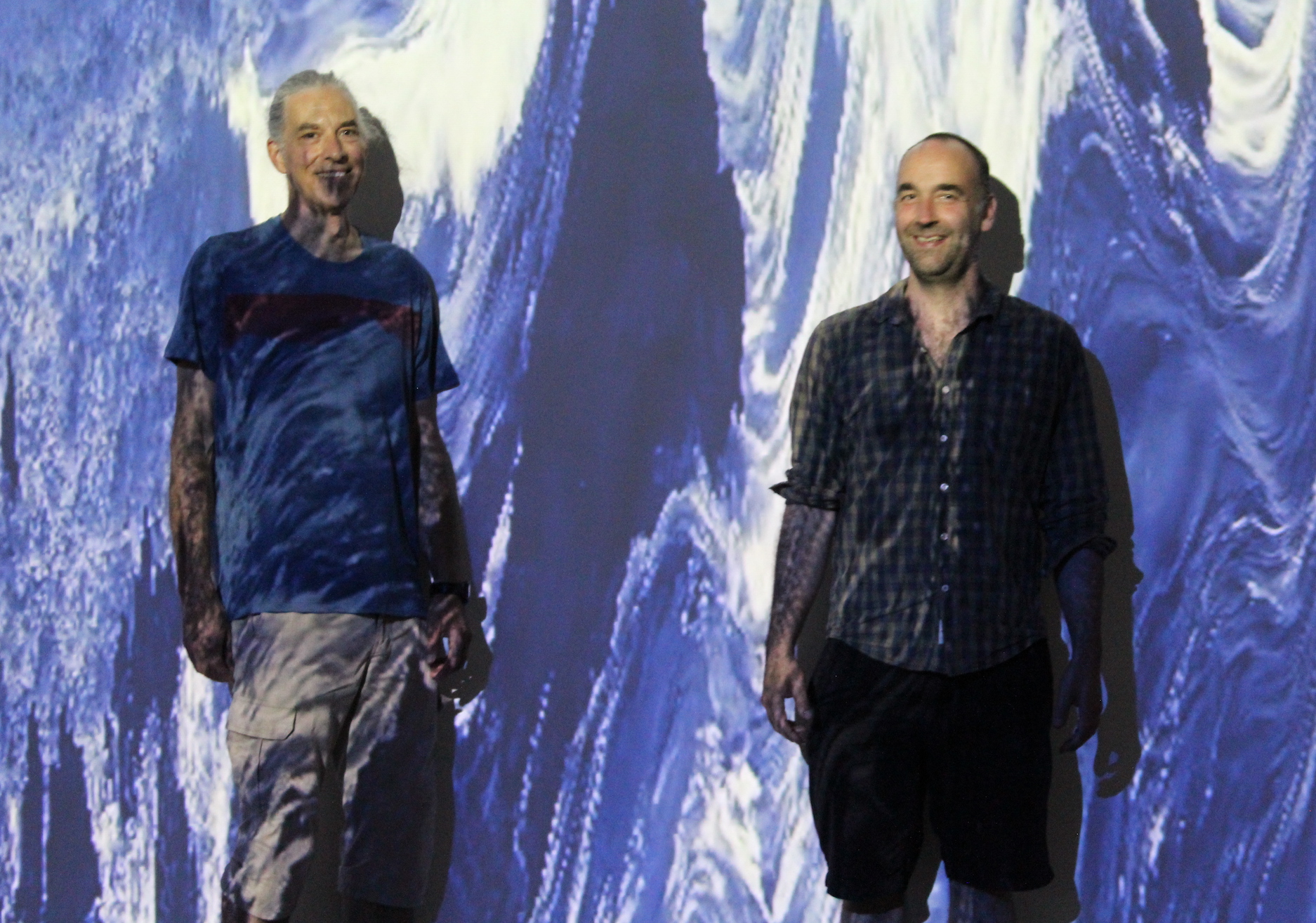A B O U T
The Robert Turner Collective is a Geneva-based artistic collaboration between Louis-Hadrien Robert and Paul Turner founded in 2019.
The collective is active in many domains – audiovisual installations, performances, moving and still images – often working in transdisciplinary projects involving music, sound art and dance.

Paul (left) grew up in New Zealand and lives in Geneva. He has a PhD from the University of Manchester and has worked in Scotland, Germany, France and Switzerland.
Louis-Hadrien (right) grew up Paris and lives in Clermont-Ferrand. He has a PhD from the University of Paris and has worked in Germany, Denmark, Luxembourg and Switzerland.
In the last 5 years, our artistic practice has
developed along two main axes:
abstraction/de(re)composition on the one
hand and spacetime as a way of rendering the
temporal in spatial terms on the other.
Our method of abstraction and reconstitution – which we refer to as algorithmic abstraction – starts by imagining how a computer might "see". Any pictorial representation of a scene has a “seer” whose viewpoint is significant to how we interpret the image. This is not the viewer of the finished work in a gallery, but rather the person (or other) whom the artist has in mind as the one seeing the scene being depicted. The idea of algorithmic abstraction has at its origin the following question: what if the “seer” were non-human? What if our “eyes” are those of a computer or algorithm? The mathematics and algorithms that we use are “mere” tools of construction (at the level of using carpentry tools to build a piano before undertaking the creative process of creating music). Nonetheless they remain fundamental to our approach.
The second principal axis of our work, used mainly in moving image and sculptural works, involves interpreting the temporal in spatial terms and vice versa. Any film clip is made up of two-dimensional frames (space) which when lined-up along a time axis produce moving images. Our point of view is to consider this shoe-box full of pixels as a unified 2+1-dimensional spacetime. Within this unified structure, it becomes possible to swap the time direction with one of the two spatial direction, by simply rotating the shoe-box. The result is a video which is in general very abstract but sometimes faintly recognisable features come in and out of existence. The visuals created by this methods are very different from any synthetic process: shapes and colours evolve rather than “move” and the emerging patterns and textures appear organic yet unnatural without the usual markers indicating the flow of time. We use this technique not only to produces standalone pieces but also for scenographic work in the performing arts.
Our method of abstraction and reconstitution – which we refer to as algorithmic abstraction – starts by imagining how a computer might "see". Any pictorial representation of a scene has a “seer” whose viewpoint is significant to how we interpret the image. This is not the viewer of the finished work in a gallery, but rather the person (or other) whom the artist has in mind as the one seeing the scene being depicted. The idea of algorithmic abstraction has at its origin the following question: what if the “seer” were non-human? What if our “eyes” are those of a computer or algorithm? The mathematics and algorithms that we use are “mere” tools of construction (at the level of using carpentry tools to build a piano before undertaking the creative process of creating music). Nonetheless they remain fundamental to our approach.
The second principal axis of our work, used mainly in moving image and sculptural works, involves interpreting the temporal in spatial terms and vice versa. Any film clip is made up of two-dimensional frames (space) which when lined-up along a time axis produce moving images. Our point of view is to consider this shoe-box full of pixels as a unified 2+1-dimensional spacetime. Within this unified structure, it becomes possible to swap the time direction with one of the two spatial direction, by simply rotating the shoe-box. The result is a video which is in general very abstract but sometimes faintly recognisable features come in and out of existence. The visuals created by this methods are very different from any synthetic process: shapes and colours evolve rather than “move” and the emerging patterns and textures appear organic yet unnatural without the usual markers indicating the flow of time. We use this technique not only to produces standalone pieces but also for scenographic work in the performing arts.